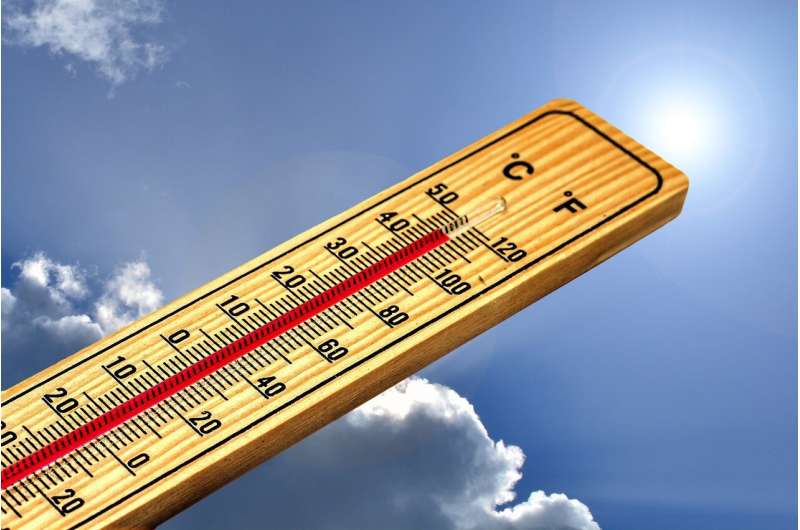This article has been reviewed according to Science X's editorial process and policies. Editors have highlighted the following attributes while ensuring the content's credibility:
fact-checked
trusted source
proofread
Study identifies temperature–humidity combinations that stress the heart

A new study shows that cardiovascular strain begins at lower temperature and humidity levels than those that cause increases in the body's core temperature, and could inform revisions to safety guidelines and policies that help protect people during heat waves. Researchers will present their work this week at the American Physiology Summit in Long Beach, California.
During extreme heat events, more heart attacks occur because the heat increases cardiovascular strain. "We wanted to establish the critical combinations of temperature and humidity that cause a continuous rise in heart rate—indicating cardiovascular strain—in healthy adults," said the study's first author Rachel Cottle, a doctoral candidate at Pennsylvania State University (PSU). "We plan to use this as a baseline before identifying the conditions that are dangerous for more vulnerable groups such as older men and women." Heat waves are expected to increase in frequency due to climate change.
The study, which is part of the PSU Human Environmental Age Thresholds (HEAT) project led by W. Larry Kenney, Ph.D., FAPS, included 45 people in their 20s who slowly walked on a treadmill or performed activities simulating the minimal activities of daily living while inside environmental chambers that produced either warm and humid or hot and dry environmental conditions.
The researchers found that during minimal activity in warm and humid environments, cardiovascular strain increased when temperatures reached 95 degrees F and relative humidity was 65% while increases in core temperature occurred at 95 degrees and 73% relative humidity. During slow walking in warm and humid environments, cardiovascular strain increased at 95 degrees and 52% relative humidity while core temperature increased at 95 degrees and 58% relative humidity.
For hot and dry environments, cardiovascular strain rose at temperatures above 113 degrees F and 19% relative humidity while core temperature increased at 118 degrees and 17% relative humidity during minimal activity. During slow walking in the same conditions, increases in cardiovascular strain occurred at 104 degrees and 25% relative humidity and increases in core temperature occurred at 109 degrees and 22% relative humidity.
"Our findings can help determine when alerts are needed to advise people to limit activity, stay hydrated and remain in the shade or air conditioning as much as possible," Cottle said. "They could also help determine when organized sporting events should be postponed, cooling centers should be implemented or outdoor workers should take extra breaks."



















